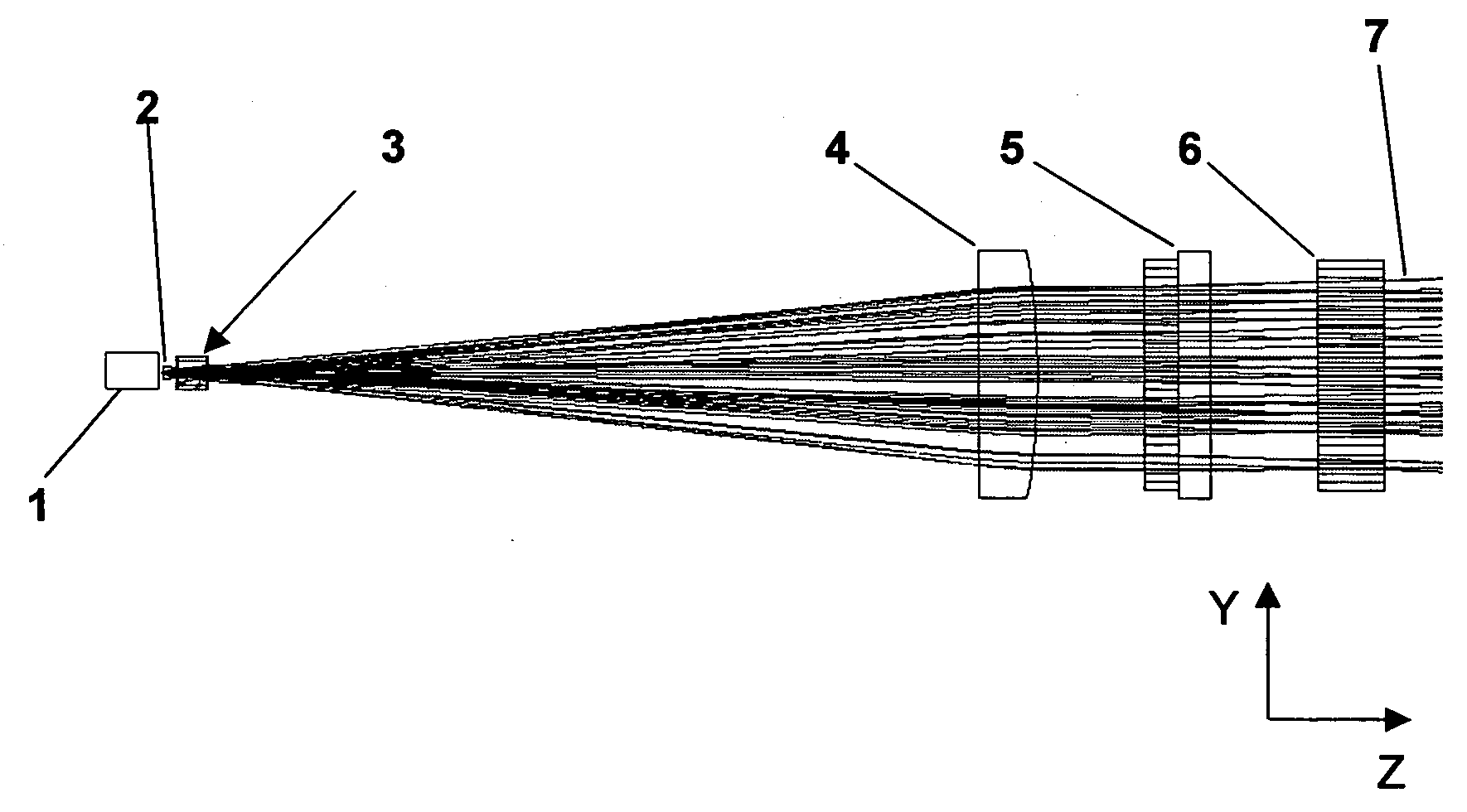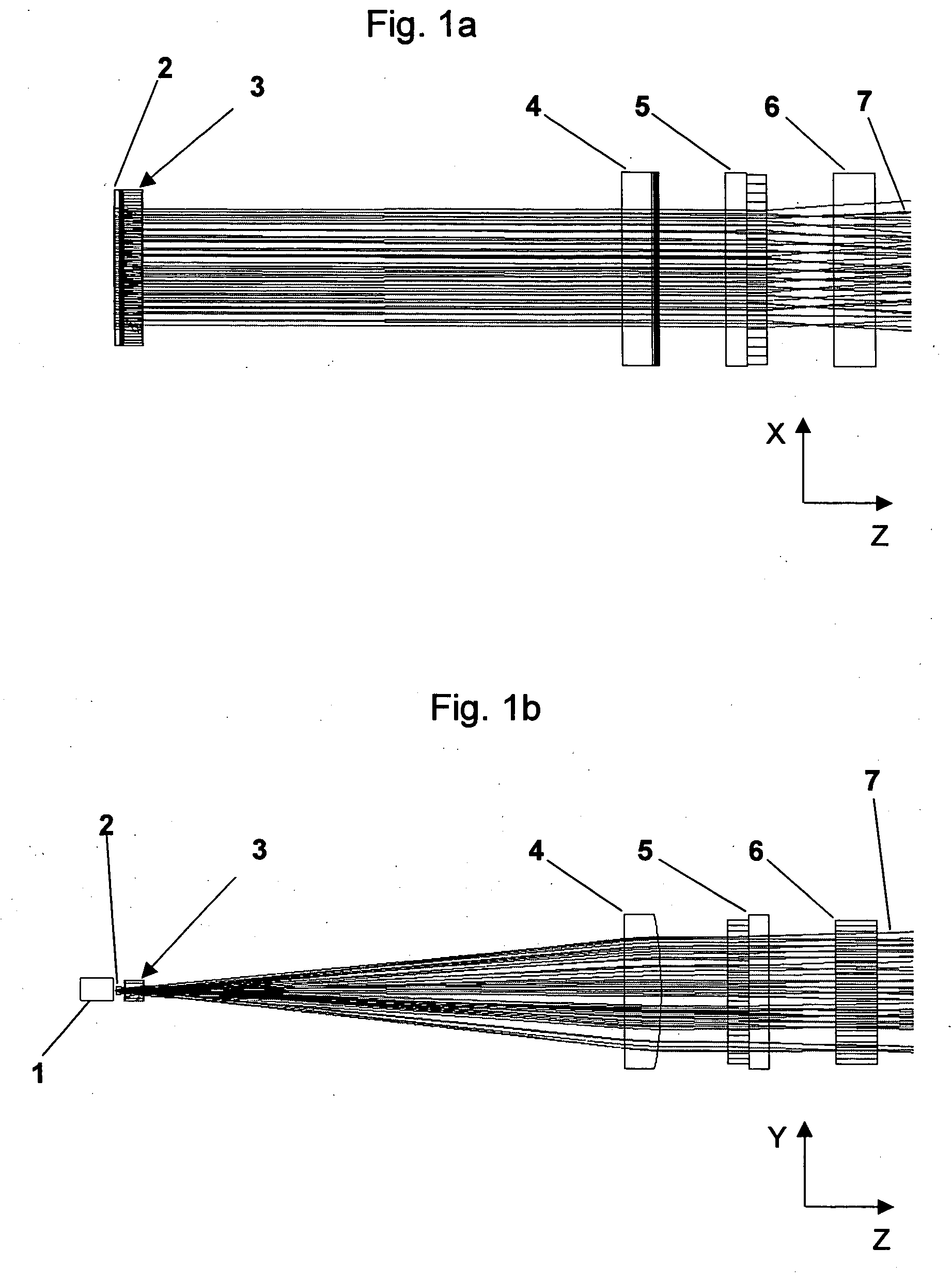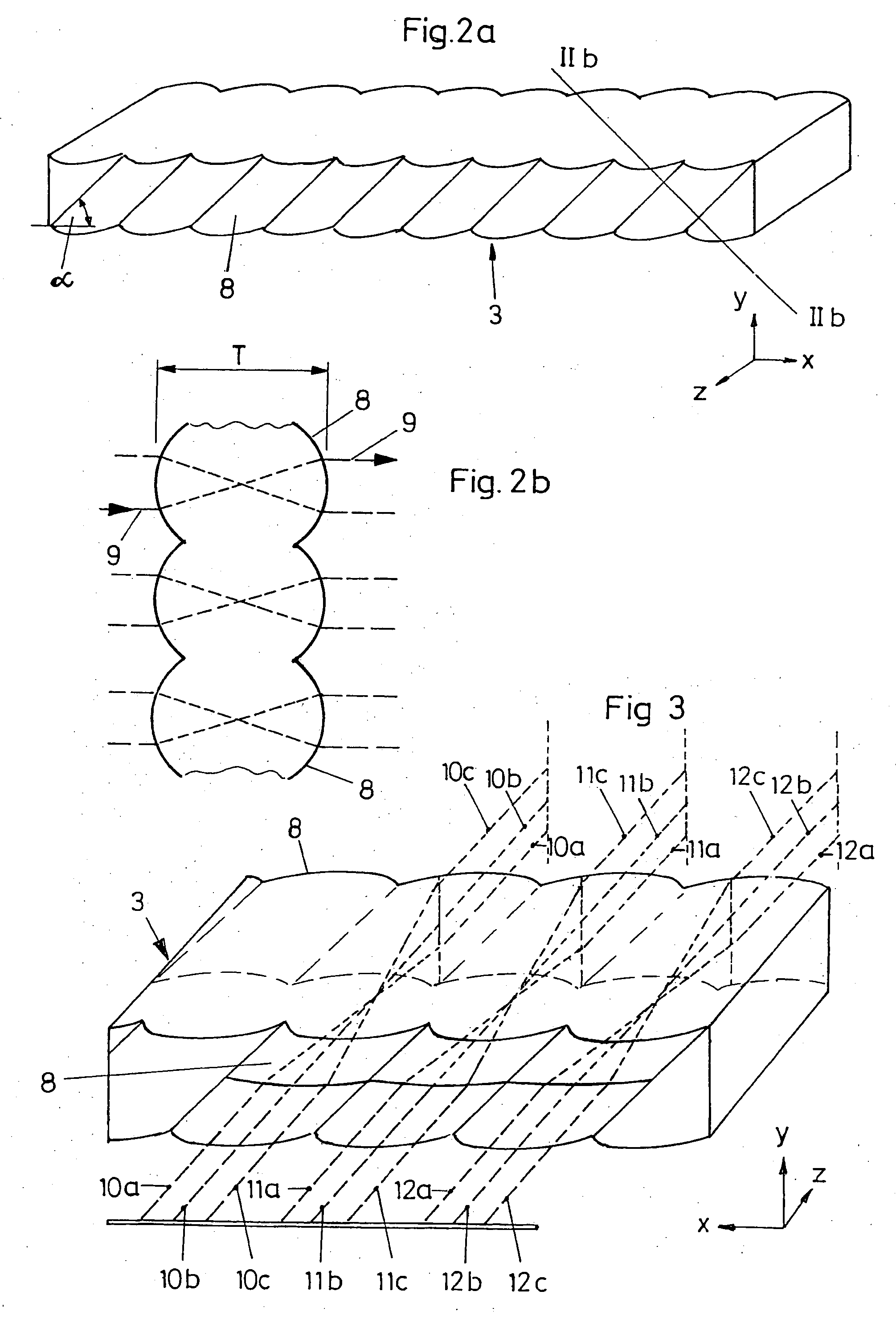Apparatus for illuminating a surface
a surface and apparatus technology, applied in the direction of instruments, condensers, laser details, etc., can solve the problems of disadvantages, different divergence of fast axis and slow axis, poor collimatability of laser light emanating from qcw bars, etc., to achieve the effect of substantially improving the ability to be used as a free emitter or for illuminating a surface, improving beam quality and improving collimatability
- Summary
- Abstract
- Description
- Claims
- Application Information
AI Technical Summary
Benefits of technology
Problems solved by technology
Method used
Image
Examples
Embodiment Construction
[0022] Cartesian coordinate systems have been drawn in the figures for the sake of better clarity.
[0023] As is to be seen from FIG. 1a and FIG. 1b, an apparatus according to the invention includes a semiconductor laser bar 1 that is designed, in particular, as a so-called QCW bar. Like other semiconductor laser bars, a QCW bar also has a number of emitters arranged next to one another and spaced apart from one another in the X-direction. However, in the case of QCW bars, the spacing between the individual emitters is substantially smaller than the extent of the emitters in the X-direction.
[0024] Sixty emitters, for example, are arranged next to one another and at a spacing from one another in the X-direction, the so-called slow-axis direction, in the case of typical QCW bars. The size of the emitting surfaces of the emitters can in this case be approximately 1 μm in the Y-direction, the so-called fast-axis direction, and approximately 150 μm in the X-direction. Here, the spacing b...
PUM
 Login to View More
Login to View More Abstract
Description
Claims
Application Information
 Login to View More
Login to View More - R&D
- Intellectual Property
- Life Sciences
- Materials
- Tech Scout
- Unparalleled Data Quality
- Higher Quality Content
- 60% Fewer Hallucinations
Browse by: Latest US Patents, China's latest patents, Technical Efficacy Thesaurus, Application Domain, Technology Topic, Popular Technical Reports.
© 2025 PatSnap. All rights reserved.Legal|Privacy policy|Modern Slavery Act Transparency Statement|Sitemap|About US| Contact US: help@patsnap.com



